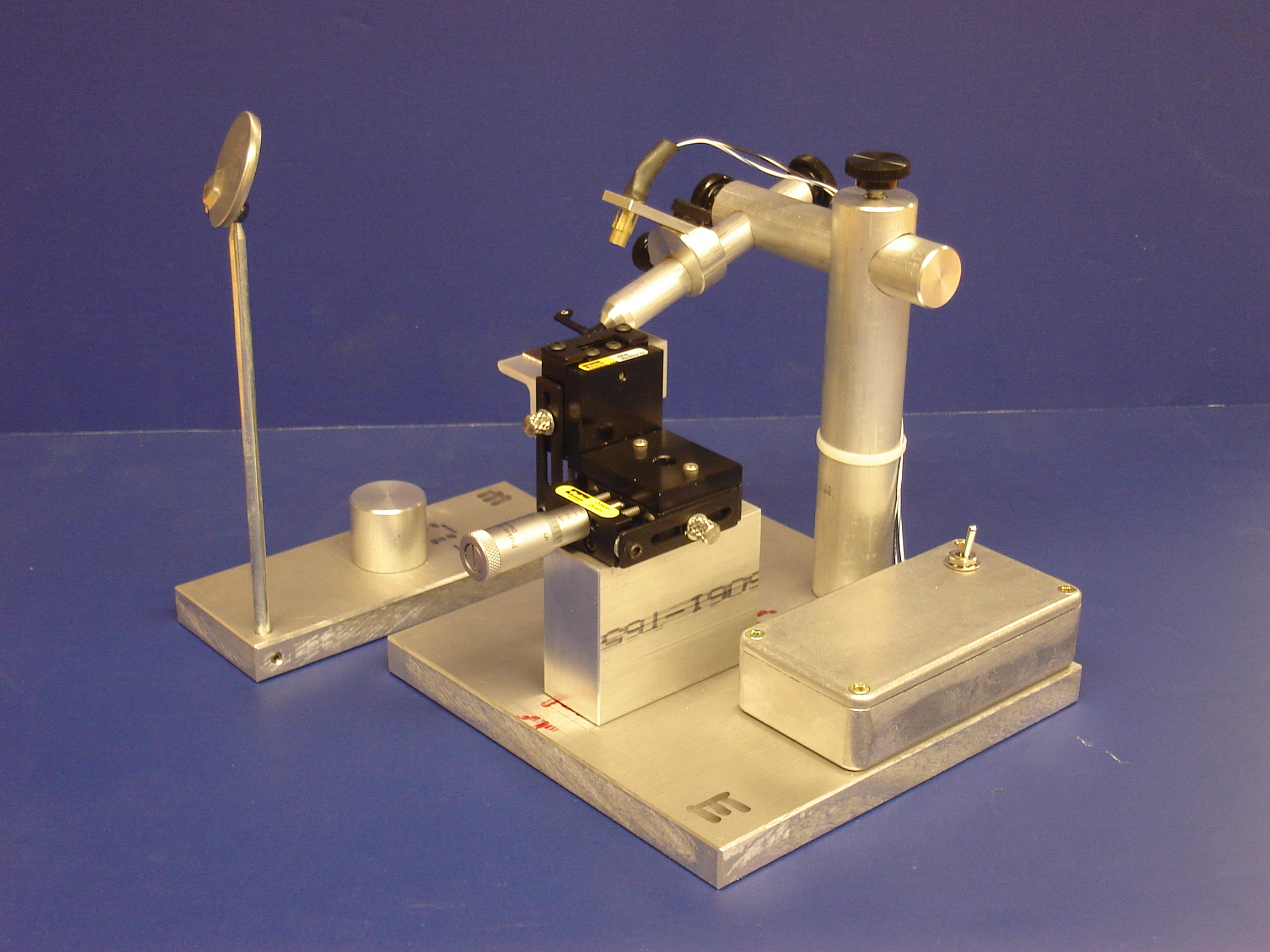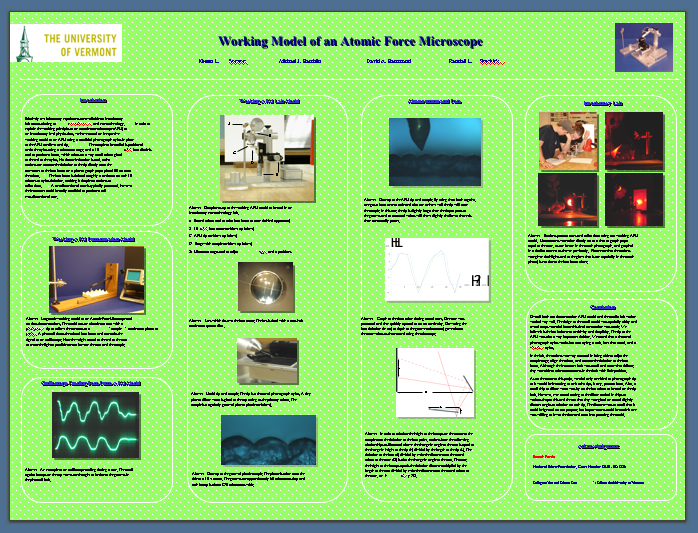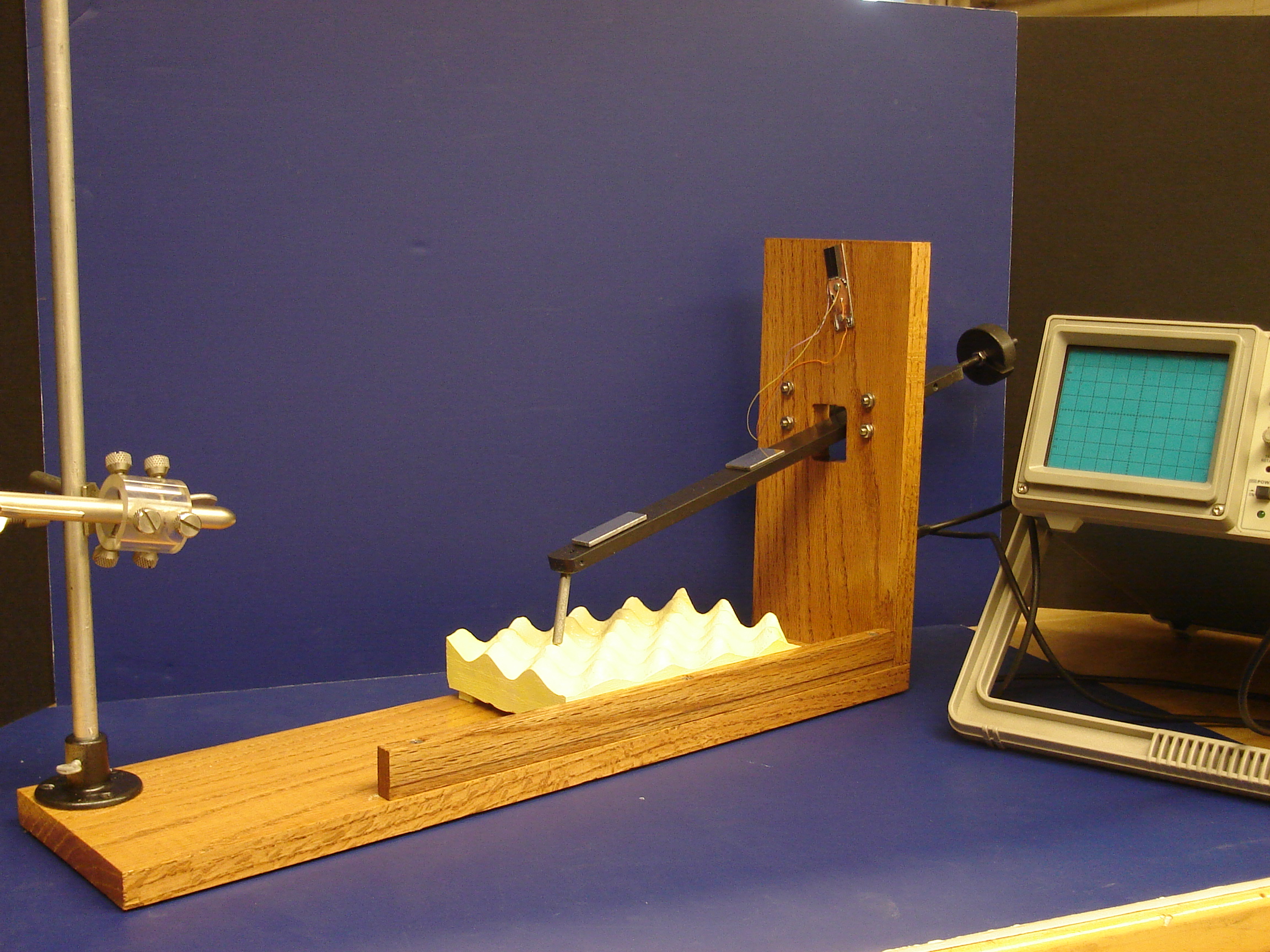Working
Model of an Atomic Force Microscope
Dr.
Randall Headrick, David Hammond, Michael Hamblin, and Kirsten Bonson
University of Vermont
 |
|
Relatively few laboratory
experiments are available for introductory lab courses relating to
nanoscience and nanotechnology. In order to explain the working
principles of an atomic force microscope (AFM) to an introductory level
physics class, we have created an inexpensive working model of an AFM
using a modified phonograph stylus in place of the AFM cantilever and
tip. The sample to be studied is positioned under the stylus using a
micrometer stage, and a 10 mW laser diode is used to produce a beam,
which reflects off a very small mirror glued to the end of the stylus.
No electronic detection is used, rather students can measure the
deflection of the tip directly from the movement of the laser beam on a
piece of graph paper placed 50 cm from the mirror. The laser beam is
deflected roughly a centimeter for each 10 microns of stylus
deflection, making it simple for students to collect data. A
one-dimensional trace is typically performed, however the instrument
could be easily modified to produce a full two-dimensional scan.
|
| Due to increasing interest in this
model and in the project in general, we have decided to make this site
explaining the assembly of the working AFM model and the resources we
used. In addition, we have included a link to the larger demonstration
model which has been used to introduce students to the concept of
atomic force microscopy before they use our working models in the lab.
|
<>
 |
Working Model of an Atomic Force Microscope Poster for NES APS / AAPT Meeting |
| (Click
Here) |
 |
Large-scale Demonstration Model |
| (Click
Here) |
<>
Model
Construction:
Tip and Cantilever
Frame and Adjustment
Mirrors and Laser
Sample(s)
AutoCAD Drawings
Application:
In The Lab
Tip and Cantilever
Frame and Adjustment
Mirrors and Laser
Sample(s)
AutoCAD Drawings
Application:
In The Lab
<>
Special Thanks To:
National Science Foundation under grant DMR-0348354 *
College of Arts and Sciences Dean's Office at UVM*
*The opinions of this website are the
author's alone and do not necessarily reflect the views of the National
Science Foundation or the University of Vermont